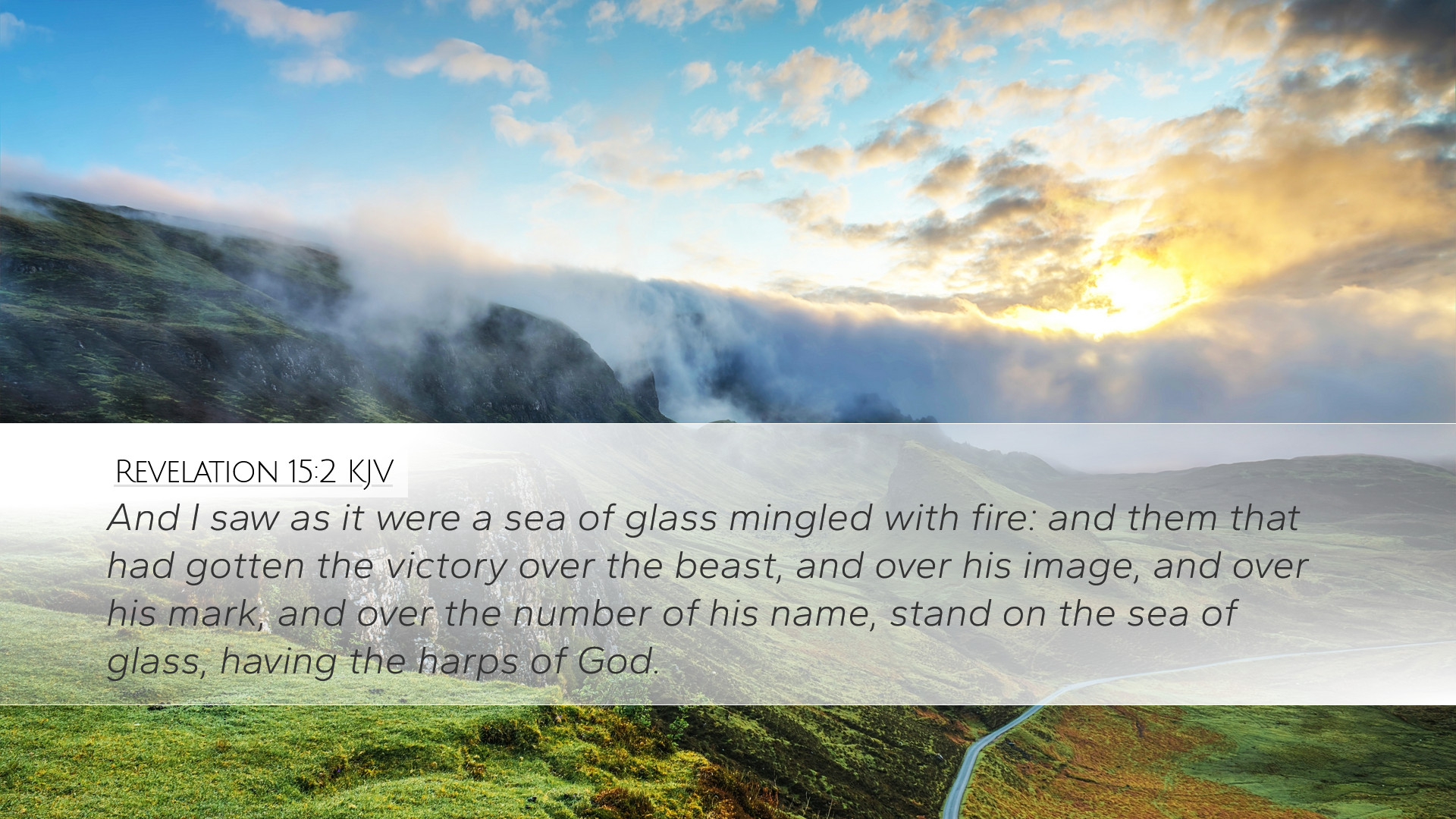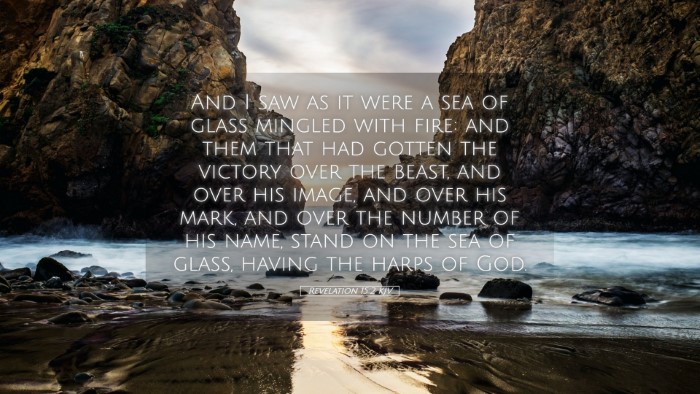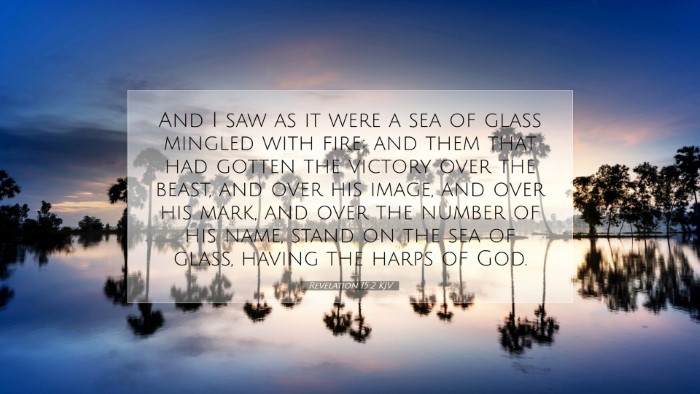Commentary on Revelation 15:2
Verse Reference: Revelation 15:2
"And I saw something like a sea of glass mingled with fire, and those who have the victory over the beast, over his image and over his mark and over the number of his name, standing on the sea of glass, having harps of God."
Introduction
This verse is part of a larger vision that the Apostle John receives regarding the judgment of the earth and the ultimate vindication of God’s people. Revelation 15 serves as a prelude to the subsequent bowls of wrath and showcases both judgment and victory. The imagery presented is rich in symbolism, drawing on the themes of divine sovereignty, judgment, and the eternal triumph of God's people.
Imagery of the Sea of Glass
Matthew Henry's Commentary: Matthew Henry observes that the "sea of glass" signifies purity and the absence of turbulence. This imagery portrays a serene state in contrast to the earthly troubles endured by believers. The glassy sea represents the peace of God that stands immutable above the chaos of sin and strife. The mingling with fire indicates the trials and afflictions that have refined the faithful. Here, fire symbolizes both the testing of faith and the purifying judgment of God.
Albert Barnes' Notes: Barnes notes the symbolic nature of the sea, emphasizing its connection to the judgement that God's people will experience. He connects the glass sea to the heavenly realm, where God's justice is perfectly displayed. The presence of fire alongside the glass suggests purification through trial, indicating that those who withstand the tribulations of the beast have been sifted and found worthy.
The Victors Over the Beast
Adam Clarke's Commentary: Clarke elaborates on the theme of victory over the beast. He identifies 'the beast' as representing oppressive worldly powers that persecute the church. He mentions that the victors are those who have remained faithful to Christ despite persecution. The victory is not achieved through worldly means, but through the Lamb’s salvation and the power of God.
Matthew Henry elaborates: Those standing on the sea represent the faithful who have persevered through adversities. Their victory is a testament to the power of divine grace in the face of spiritual warfare. The act of standing reflects their steadfastness and triumph, having received the crown of life promised to those who love God.
The faithful are depicted as having 'harps of God', which symbolically represents their worship and praise. Their victory is ultimately linked to their identity as worshippers of God who give thanks for His deliverance.
The Significance of Music in Worship
Albert Barnes' Understanding: The 'harps of God' serves as a powerful reminder of the centrality of worship in the life of a believer, particularly after the tribulations faced. It signifies the joy and praise that follows the suffering. Worship is essential in acknowledging God's sovereignty over the trials one faces.
Matthew Henry adds: The use of harps underscores the nature of heaven as a place of music, joy, and pure fellowship with God. The act of making music represents the profound relationship between God and His people, where every note of worship flows from gratitude and a recognition of God's grace.
Theological Implications
This verse encapsulates crucial theological themes within Christian eschatology. First, it asserts the certainty of God’s ultimate victory over evil. The imagery evokes a sense of hope for believers, affirming that despite their present sufferings, they will emerge victorious by the grace of God.
Moreover, Revelation 15:2 highlights the connective theme of suffering and glory. The faithful face persecution, yet their perseverance results in a deeper experience of God's love and eventual triumph. It teaches that trials serve a purpose in God's economy, leading believers to the ultimate reward of eternal life and fellowship with Him.
Practical Applications for Believers
- Faithfulness in Trials: The imagery serves as a reminder to stay faithful amidst trials as they prepare believers for their final victory.
- Worship as Response: Encouraging regular worship and praise as a response to God's acts of deliverance strengthens the believer’s spirit.
- Hope in God's Justice: Believers can take comfort in the assurance that God's justice will prevail and that they will not suffer in vain.
- Community of Believers: The significance of standing together on the sea underscores the importance of Christian fellowship and support in times of persecution.
Conclusion
Revelation 15:2 encapsulates deeply ingrained themes of triumph over evil, worship in the face of suffering, and the assurance of God’s righteousness. The collective victory of the saints highlights the transforming power of God’s grace that sustains believers throughout their trials. By holding firm to their faith, Christians can anticipate the ultimate vindication that comes from Christ's victory at the end of the age.


